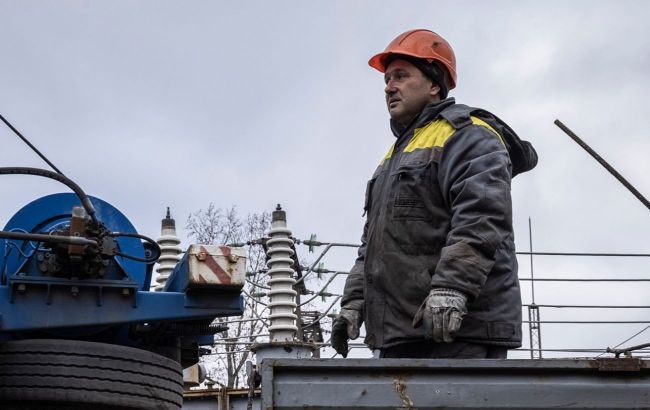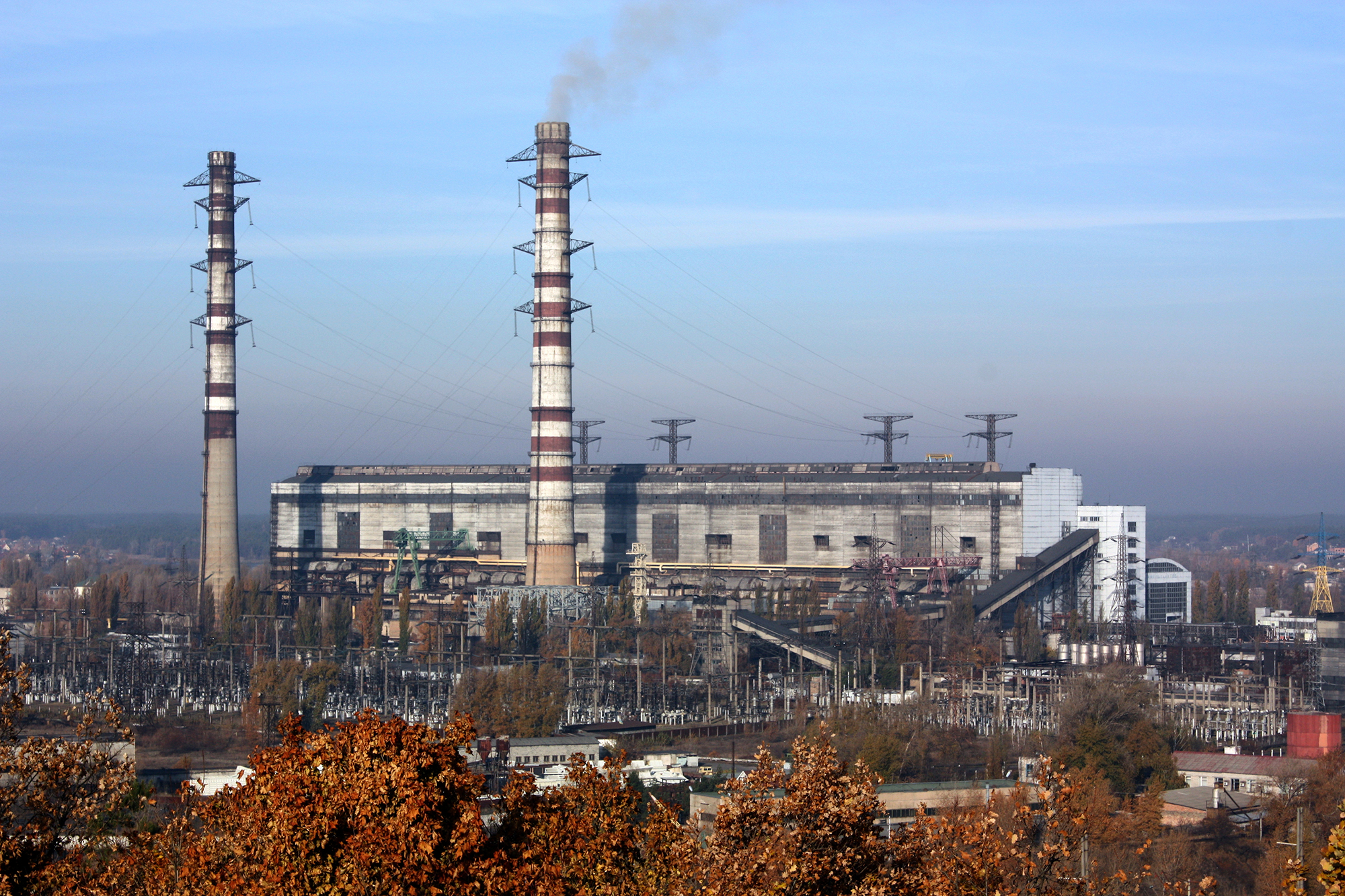Attack on Ukraine's power generation. New Russia's tactics and how long it may continue
 Photo: Ukrainian energy industry is under a new series of Russian strikes (Getty Images)
Photo: Ukrainian energy industry is under a new series of Russian strikes (Getty Images)
Russian forces continue a series of mass attacks on Ukrainian energy infrastructure. This time, the focus is on thermal power plants and central heating plants, the restoration of which will take many months.
For more details on the consequences of strikes on thermal power plants and central heating plants, as well as why occupiers have started targeting generation facilities more frequently, read the material by RBC-Ukraine.
Sources used in preparing the material include materials from the Financial Times, The Wall Street Journal, data from Wikipedia, and statements from Ukrainian officials.
Contents
- Which generation facilities Russia targeted and what is known about the consequences
- Briefly about the power system and the difference between thermal power plants and cogeneration plants
- Aggressor changed tactics? What does this mean
- Russian forces prepare for the new offensive by targeting thermal power plants
- How long can attacks last and what to expect
Which generation facilities Russia targeted and what is known about the consequences
The Russian Federation has destroyed the majority of the generation facilities through missile strikes. Prime Minister Denys Shmyhal stated this last week. According to him, Ukraine has lost over 6 GW of its energy system capacity as a result.
"This includes both hydro and coal energy. They continue to target our energy facilities, destroying transformers, generators. Unfortunately, over the past week, Russia has destroyed 80% of thermal generation," he said.
The series of strikes has continued since the second half of March. In particular, the night of the 22nd saw the most massive attack on the Ukrainian energy system. As a result, approximately half of the capacity was lost by the largest energy company, DTEK, with the Dnipro Hydroelectric Power Plant being the most affected object. The most significant destruction occurred in Kharkiv: all thermal power plants were destroyed, including the large cogeneration plant. Since then, the regional center has been recovering at the expense of other regions.
There is no complete information on how many and which generation facilities have been affected since then. It is known that the strike on March 22 damaged all units at the Burshtyn and Ladyzhyn thermal power plants in the western part of the country. The degree of destruction ranges from over 50% to complete.

Photo: rescuers at an energy facility in the Ivano-Frankivsk region (ifr.gp.gov.ua)
On March 24, strikes targeted facilities in the Lviv region. Ukraine then suspended the export of electricity and increased imports. On the 29th, Russians attacked three unnamed DTEK stations, as well as the Kaniv and Dniester hydroelectric power plants. As President Volodymyr Zelenskyy stated, Moscow wanted to repeat the catastrophe with the Kakhovka Dam, but in the case of the Dniester HPP, Moldova was also threatened.
Expert Maksym Bilyavskyi, in a comment to RBC-Ukraine, cited two possible reasons. Firstly, Moldova assists our country with the transit of electricity. Secondly, its balance partly depends on stations in Transnistria. Presumably, Russia attempted to reduce Ukraine's import capabilities and increase Moldova's dependence on the so-called Pridnestrovian (Transnistrian) Moldovan Republic.
On March 30, it became known that the Zmiiv Thermal Power Plant near Kharkiv was completely destroyed. According to the state-owned company Centrenergo, all blocks were destroyed, and auxiliary equipment was damaged. The degree of destruction ranges from complete to significant. The exact scale will be assessed after the debris is cleared. DTEK also announced very severe damage to 5 out of its 6 stations, repairs for which may take up to one and a half years.
On the night of April 11, Russian forces struck the Trypillia Thermal Power Plant. This is the most powerful power plant, which generated over half of the energy for enterprises in the Kyiv region. As a result, it was completely destroyed, with Centrenergo describing the scale as horrifying. It's worth noting that the company lost 100% of its generation capacity (after the loss of Zmiiv and the seizure of the Vuhlehirsk TPP in the Donetsk region).
For more details about the attack on the Trypillia Thermal Power Plant, please read the material by RBC-Ukraine.
The experts surveyed believe that the destruction of this station will not lead to critical consequences for the power systems of the Kyiv, Cherkasy, and Zhytomyr regions, which it supplied. The station was already operating below full capacity, but during the high-consumption summer period, forced restrictions may begin. Centrenergo knows the restoration terms for the TPP but does not specify them "for objective reasons."

Photo: fire after strike on the Trypillia Thermal Power Plant (t.me/lachentyt)
As a result of today's strikes, another cogeneration plant supplying Kharkiv has been damaged. Despite the attacks, the city continues to function, with the metro, trolleybus, and some tram routes operational.
Briefly about the power system and the difference between thermal power plants and cogeneration plants
The Ukrainian power system is a branched structure without a specific center. Generation feeds electricity into a unified grid, through which it reaches consumers. Local networks are connected through substations.
Most generating capacities are state-owned, including nuclear and hydroelectric power plants, as well as some thermal power plants and cogeneration plants. There is also a large number of thermal power plants and cogeneration plants, wind, and solar stations in private ownership. The main management body is the company Ukrenergo, which operates under the Ministry of Energy and ensures the delivery of energy to distribution companies.
The largest suppliers are:
-
DTEK - Burshtyn, Ladizhyn, Dobrotvir, Kurakhiv, Kryvyi Rih, Prydniprovsk, Zaporizhzhia (Enerhodar), Luhansk (Shchastia), and Zuyiv TPPs (the latter three are in the occupied territories).
-
Centrenergo - Trypillia, Zmiiv, and Vuhlehirs TPPs (the latter in the occupied territory).
-
Ukrhydroenergo - Kyiv HPP and Kyiv PHES, Kremenchuk, Kaniv, Dniester HPPs and PHESs, Dnipro HPP-1 and HPP-2, and Kakhovka HPP (the latter three are destroyed).
-
Energoatom - Rivne, Khmelnytskyi, South Ukrainian, and Zaporizhzhia NPPs (the latter in the occupied territory).

Photo: Thermal power plants account for about one-third of all generation. (source: wikipedia_dmitri_tovstonog)
Before the full-scale invasion by Russia, over 50% of the generation came from nuclear power stations, while hydroelectric power stations (HPPs) and pumped hydroelectric energy storage (PHESs) accounted for up to 7%. Thermal power plants (TPPs) and cogeneration plants (CPs) provide about one-third of the electricity.
In total, thermal power plants and cogeneration plant provided about 34 GW of energy per year by 2022. The capacities of power plants exceeded those of cogeneration plants by four times - 27.7 GW compared to 6.5 GW. In Ukraine, there were 14 TPPs and 21 CPs in operation. Due to attacks between 2022 and 2024, some of them have been destroyed or damaged. As mentioned earlier, there are no precise data on the extent of the destruction.
Why have Ukrainian TPPs and CPs become the main targets in the current stage of the war? President Volodymyr Zelenskyy answered this question several weeks ago.
"Russian terrorists are currently aiming for such despicable strikes - for the energy exsanguination of Ukraine," he noted.
A thermal power plant (TPP) is a facility that generates electricity by burning coal or gas in special boilers. Water circulates through pipes in them, which, when heated, turns into steam, under pressure, rotates turbines, generating electricity. Heat is produced incidentally, usually for a satellite city. The main process - burning fuel, creating thermal energy, converting it into electricity using turbines and generators.
A cogeneration plant (CP) is a plant that generates electricity and heat for local use. Depending on the location and technology, the accompanying electricity is supplied to the city or enterprise. However, in the overall production volume, they account for up to 10% and operate on a relatively consistent schedule.
Why are these plants necessary? The main part of electricity is generated by three nuclear power plants. And thermal and hydroelectric power are crucial for balancing the system during consumption peaks. The maneuvering capacity of hydro generation is insufficient to cover the drops, so the role of thermal power plants remains high.
Aggressor changed tactics? What does this mean
Russia has completely changed its tactics of strikes on the energy infrastructure. Now it launches precision missiles at power plants in areas less defended than Kyiv. Some of them will not be fully restored by winter, writes the Financial Times.
The consequences of the recent attacks are much stronger than in the winter of 2022-2023, as they are aimed at causing irreparable damage. The source quotes the words of DTEK CEO Maksym Tymchenko, who says that if the strikes are not repeated, at least 50% of the damaged power units will be reconnected to the grid.
If not for the warm weather, imports from European countries, and the increase in renewable energy production, Ukraine would have faced mass blackouts like last year. But that hasn't happened yet. Much of this is because last year, they mainly targeted distribution stations and transformers. That forced the implementation of schedules across the country. Now, with pinpoint strikes on the stations, the Russians are trying to cut off power to large cities and industrial areas.
Another important difference from the winter of 2022-2023 is the use of expensive ballistic missiles. For instance, in one of the recent attacks, Russia struck a power plant with several missiles worth $100 million. Ukraine only has a few Patriot systems capable of intercepting them.
As before, drones are being used in large numbers as a cheaper way to target energy objects like transformers, notes Andrii Chernyak, a representative of the Main Directorate of Intelligence.
"We expected an attack at the beginning of winter, but now we see that the missiles they used are newly manufactured," he said. According to his estimates, the Russian forces have enough missiles left for another 1-2 major attacks in the coming weeks.
After the March strikes, imports from the European Union reached a record high of 18,700 MW/h, equivalent to the energy output of two power plants. One option for the future could be to increase the number and decentralize wind and solar stations across Ukraine to minimize generation disruptions as much as possible.
Russian forces prepare for the new offensive by targeting thermal power plants
Moscow isn't even attempting to conceal strikes on energy facilities, even though such infrastructure primarily serves civilian populations rather than military needs. Moreover, attacks on them are prohibited by international conventions.
In today's Russian Ministry of Defense briefing, it was stated that the attack overnight on April 11, which also destroyed the Trypillia Power Plant, was carried out in response to Ukrainian strikes on oil refineries. Missiles of long-range air and sea-based platforms, as well as drones, were used in targeting energy facilities. Traditionally, they claim "all targets hit," resulting in alleged disruptions to the operations of military-industrial enterprises and so forth.
The Wall Street Journal suggests that the extensive campaign of strikes on power plants may be linked to delays in Western aid and is part of Moscow's efforts to gain an advantage in the third year of full-scale war.

Photo: Russians may be preparing for a new offensive with attacks on the TPP (t.me/voynareal)
The Wall Street Journal highlights statements from Ukrainian officials, who claim that tens of thousands of families are currently without electricity. President Zelenskyy has once again called on partners to provide additional assistance in the form of air defense systems. Prior to this, he warned that interceptor missiles would soon run out if attacks continue at their current pace.
Depleting supplies forces difficult decisions regarding which cities and infrastructure to protect and which to leave vulnerable. Recent attacks only underscore the vulnerability of the country's energy infrastructure.
Through strikes on civilian infrastructure, Russia seeks to lay the groundwork for future advances, beginning with wearing down air defenses and diverting resources from the front lines.
"Ukraine's air-defense situation could become quite critical by the summer," the publication quotes military analyst Franz-Stefan Gady from the International Institute for Strategic Studies (IISS).
How long can attacks last and what to expect
During the spring, Russian forces plan to carry out several more mass strikes on the energy sector. This was stated by Vadym Skibitskyi, a representative of the Main Directorate of Intelligence, in a comment to RBC-Ukraine at the beginning of the month.
According to him, intelligence estimates the stockpile of Russian precision missiles at 950 units. These are missiles of operational-strategic and strategic levels with a range of over 350 kilometers. Whenever they manage to accumulate over 900, a series of attacks begins. When the stocks approach the 900 mark again, Russia takes a pause. However, local shelling may still continue during this time.
The Ministry of Energy is not making forecasts for the situation in the coming months. According to Deputy Minister Svitlana Hrynchuk, the enemy's plans are unknown, possible consequences are also unclear, and schedules for the entire Ukraine are not planned yet, but everything may change. Meanwhile, Minister Herman Halushchenko mentioned a possible increase in electricity tariffs.
"Today the situation is even more complicated compared to last year, as we have lost a lot of hydroelectric power and are forced to carry out scheduled maintenance of nuclear units," he said in an interview with Bloomberg, but clarified in recent days that a decision on tariffs has not been made yet.
The extent to which future attacks will affect the energy system will determine Ukraine's ability to prepare for the next heating season. Prime Minister Denys Shmyhal has already outlined the task of reducing risks associated with thermal generation, decentralizing it, and providing cover with air defense means.

